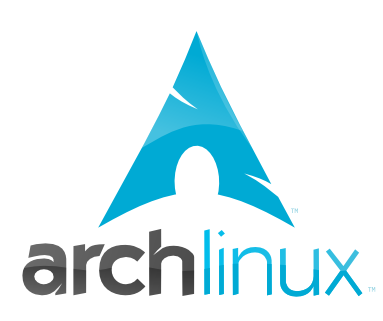I am a user of Linux and Windows (thought I really detest win Vista, from the bottom of my heart), I've used Debian, DreamLinux 3.5, various versions of Ubuntu, Puppy Linux as well. I took some free time to familiarize with something new to me - Arch Linux.
First of all, this distribution drew my attention due to the fact that it is developed as an independent branch of Linux (for example.: Ubuntu depends on Debian, Fedora depends on RedHat,etc.) Arch comes bundled with its own package manager pacman. Arch is also lightweight and simple, at least, so say the developers. Anyway, this distribution is focused on the already "warmed up" Linux user, so it is not advised to take it for spin until you think you can hadle at least Ubuntu.
The installation process is fairly straightforward and does not take a lot of time, especially if the user knows what he wants to do next. To install the Linux distribution, downloading from Arch Linux http://www.archlinux.org/download/ Netinstall Image (version: 2010.05, the kernel (called kernel) Version: 2.6.33.4) in the user downloads or HTTP / FTP servers. Submitted to ISO image to a DVD-RW or CD simple.
Then graphic menu loads from the optical media - let's press the Enter button and follow the instructions on the screen. When the console appears, one should enter this:
/arch/setup or aif -p interactive
it does not matter which one you will enter because either of these commands will start the installation process.
/arch/setup or aif -p interactive
it does not matter which one you will enter because either of these commands will start the installation process.
Now we should see a blue and gray graphic installation environment - by following the instructions, we now should get get a box with eight choices:
We choose the first point and let the setup wizard automatically recognize and configure the network settings, then set the time and time zone. Depending on how the user has partitioned their hard drive(s) in the third step there is a choice of four drive space management techniques. It is recommended to have three (and may be more, dependens on the individual) partitions: / (root), /boot, swap [formerly recommended to most distributions provide a swap twice as much disk space than available RAM, but this rule has become obsolete - and a equal to RAM is enough, or 2 GB is also OK]. After making the necessary changes in the identification, sit back and watch the installationcprocess for a bit, then get we'll get back to those said eight points in the menu.
The next phase - selection and installation packages. Then choose the sixth option and configure the system - this will allow us to install the latest Bootloader - a process that will turn on your computer to select the operating system in the during the system boot up. In the Configuration menu glance through if everything we want is set and selected, then a new root user password needs to be set, select "run & get back to menu", press the Enter key.
The next phase - selection and installation packages. Then choose the sixth option and configure the system - this will allow us to install the latest Bootloader - a process that will turn on your computer to select the operating system in the during the system boot up. In the Configuration menu glance through if everything we want is set and selected, then a new root user password needs to be set, select "run & get back to menu", press the Enter key.
Now, the Bootloader is left to sort out, so here we go - to 7 above, click on the "Install the GRUB bootloader," OK, get to a text editor nano, the point is - to check how acuratelly the setup wizard found the drives and partitions for computer to boot properly.
If everything is alright, exit from the editor by pressing Ctrl-X, then the setup displays the "Boot Device Selection" window - offers to pick and select a drive or a chapter would like to enter the GRUB Bootloader (usually followed by the GRUB in the MBR - Master Boot Record, but not to a specific drive, so it is best not select anything here), press the Enter key. And finally, leave the installation process - 8th Exit Install, type in reboot - we're done!
The system reboots, pull the CD out of the CDROM drive and wait for Arch Linux to boot. The first thing we will get will be the plain old command console, no graphical user interface, there is a reason to it - Arch's philosophy is DIY - so from this point it is up to user to start building his own Arch Linux system the way he likes it. Arch Linux supports a variety of graphical interfaces, such as Blackbox, Fluxbox, GNOME, IceWM, KDE, Openbox, WMaker, Xfce. Go for it, D-I-Y and Keep It Simple, Stupid!
To create and improve their system - people should get more details and info from Arch forume and Arch wiki.


